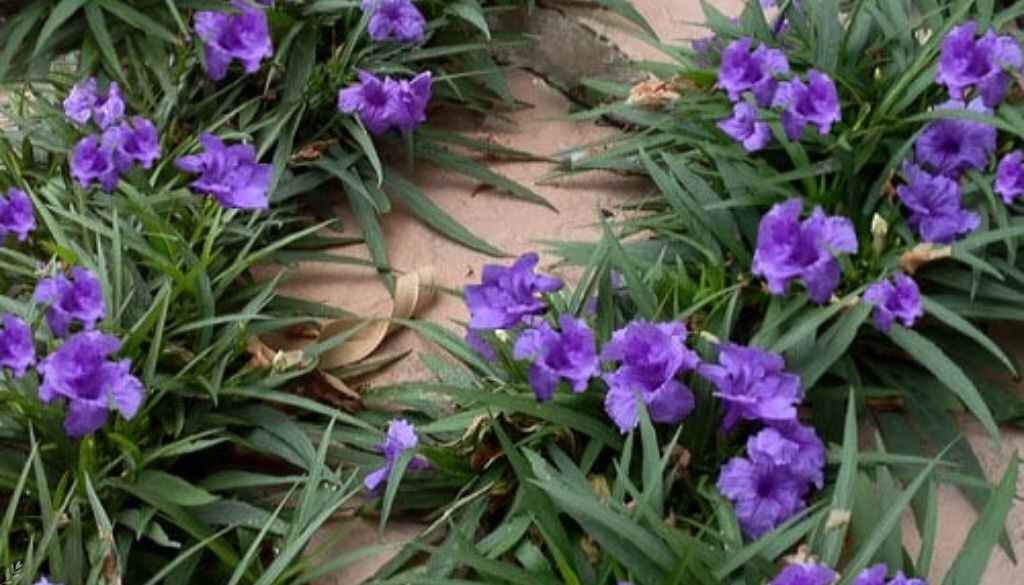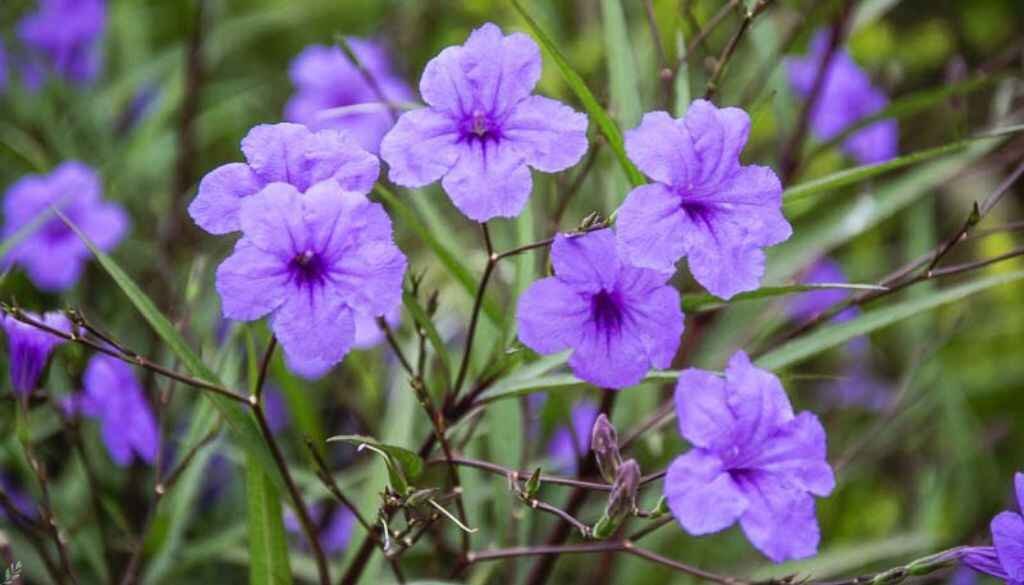Introduction to Rueliasativanna
Have you heard of Rueliasativanna? This fascinating term might be new to some, but its roots and significance stretch deep into the realms of art, nature, and everyday life. Originating from a blend of Latin and botanical influences, Rueliasativanna encapsulates the essence of environmental harmony and artistic expression. But what does it really mean? And why is it captivating art enthusiasts, nature lovers, and environmental activists alike?
What is Rueliasativanna?
Rueliasativanna is a term that combines aspects of art and nature to symbolize environmental balance and creative energy. Derived from the Latin “Ruelia,” referencing a genus of flowering plants, and “sativanna,” suggesting cultivation and growth, it represents the intersection of the natural world and human artistic endeavors.
This concept highlights the importance of fostering both ecological health and artistic inspiration, suggesting that true beauty and sustainability arise when these elements are in harmony.

The Significance of Rueliasativanna in Art
Art has always been a powerful medium for conveying messages and emotions, and Rueliasativanna is no exception. In the art world, this concept serves as a reminder to incorporate nature into creative works and to use artistic influence to promote environmental awareness. From paintings depicting scenes of lush forests to sculptures crafted from recycled materials, the beauty of Rueliasativanna can be seen in various forms of art. By incorporating elements of nature into their work, artists not only celebrate its beauty but also bring attention to important issues such as climate change and conservation.
History of Rueliasativanna
Early Botanical Discoveries
The history of Rueliasativanna can be traced back to ancient botanical explorations. Early botanists and naturalists were fascinated by the unique properties of the Ruelia genus, particularly their vibrant flowers and adaptability to various environments.
Documentation of these plants dates back to the writings of early herbalists who recognized their potential both aesthetically and medicinally. These early accounts laid the groundwork for a deeper appreciation and study of the Ruelia genus, ultimately contributing to the development of the Rueliasativanna concept.
Artistic Movements and Cultural Influence
The artistic dimension of Rueliasativanna began to take shape during the Renaissance when artists sought inspiration from the natural world. This period saw the fusion of botanical studies with artistic renderings, leading to a burgeoning interest in depicting nature’s intricate beauty.
Floral patterns, particularly those inspired by the Ruelia plants, became prominent in various art forms including painting, tapestry, and sculpture. Artists and scholars alike began to embrace Rueliasativanna as a symbol of the harmonious relationship between nature and human creativity.
Rise in Popularity
The 19th and 20th centuries witnessed a significant rise in the popularity of Rueliasativanna. As environmental movements gained momentum, the appreciation for natural beauty and sustainable living practices grew.
Rueliasativanna, with its roots in both botanical and artistic traditions, resonated profoundly with these movements. Exhibitions and botanical gardens dedicated to showcasing Ruelia species sprang up worldwide, further cementing the concept’s place in both environmental and artistic communities.
Modern Interpretations
In contemporary times, Rueliasativanna continues to evolve, absorbing modern sensibilities and technological advancements. Artists today use digital mediums to create works inspired by the Ruelia plants, while environmentalists leverage the concept to promote conservation efforts.
The blend of tradition and innovation keeps Rueliasativanna relevant, ensuring that its legacy as a bridge between art, nature, and culture endures.
The history of Rueliasativanna is a testament to humanity’s enduring fascination with the natural world, as well as our unwavering drive to express this wonder artistically. Through centuries, it has embodied the spirit of exploration, creativity, and environmental stewardship, making it a truly timeless concept.
Environmental Effects of Rueliasativanna
- Biodiversity Support: The Ruelia genus, central to the concept of Rueliasativanna, provides vital support to local ecosystems by offering habitat and nourishment for various pollinators including bees, butterflies, and hummingbirds.
- Erosion Control: Ruelia plants, with their hardy and resilient nature, play a crucial role in preventing soil erosion. Their root systems stabilize the soil, reducing the risk of landslides and maintaining the integrity of natural landscapes.
- Air Purification: Like many other plants, Ruelia species contribute to air purification by absorbing airborne pollutants and releasing oxygen, thus improving air quality and supporting healthier environments.
- Water Filtration: Certain Ruelia species can thrive in wetland areas, where they assist in water filtration by trapping sediments and absorbing excess nutrients, thereby enhancing water quality in these sensitive ecosystems.
- Climate Regulation: Through the natural process of photosynthesis, Ruelia plants sequester carbon dioxide, ultimately aiding in climate regulation and reducing the impact of greenhouse gases on global warming.
- Cultural Preservation: Rueliasativanna promotes the preservation of traditional botanical knowledge and cultural practices, highlighting the interplay between human societies and their natural surroundings.
- Aesthetic Enhancement: The vibrant blooms and lush foliage of Ruelia plants significantly enhance the visual appeal of natural and cultivated landscapes, contributing to human well-being and enjoyment of natural spaces.
These environmental effects underscore the multifaceted impact of Rueliasativanna, emphasizing its role not just in artistic and cultural contexts but also in the preservation and enhancement of our natural world.
Myths Behind the Meaning of Rueliasativanna
The Legend of the Eternal Bloom
- Everlasting Love: In ancient folklore, Rueliasativanna is often associated with stories of eternal love. It is said that a pair of lovers, separated by circumstances, planted a Ruelia flower as a symbol of their undying affection. Legend has it that the flower continued to bloom season after season, representing their unbroken bond.
- Rebirth and Renewal: Some cultures believe that Rueliasativanna symbolizes rebirth and renewal. This myth suggests that the vibrant blooms of the Ruelia plant emerge even in the harshest conditions, indicating a continuous cycle of life, death, and rebirth.
The Guardian Spirit
- Protector of the Forests: A popular myth among indigenous tribes speaks of a guardian spirit residing within the Ruelia plants. This spirit is believed to protect the forests and all living beings within them, ensuring balance and harmony in the natural world.
- Messenger of the Gods: Another interpretation sees Rueliasativanna as a divine messenger. The appearance of its flowers is thought to be a sign from the gods, conveying messages of hope, protection, and guidance to those who seek it.
The Healer’s Dream
- Medicinal Properties: Healers and shamans have long revered Ruelia plants for their supposed medicinal properties. Myths suggest that dreams involving Rueliasativanna guide healers to create potent remedies, highlighting the plant’s mystical connection to health and wellness.
- Spiritual Cleansing: There are also beliefs that burning Ruelia leaves in rituals helps cleanse spiritual impurities and restore balance to one’s life, reinforcing its role in holistic and spiritual healing practices.
The Artist’s Muse
- Inspiration for Creation: Artists throughout history have viewed Rueliasativanna as a muse for creativity. Myths revolve around the idea that those who dream of Ruelia flowers are destined for artistic greatness, inspired by the plant’s natural beauty.
- Symbol of Imagination: The ceremonial use of Ruelia plants in artistic festivals underscores its symbolic link to imagination and the boundless nature of human creativity.
These myths enrich the cultural tapestry surrounding Rueliasativanna, adding layers of meaning and significance to this remarkable genus of flowering plants.
The Artistry of Rueliasativanna
Art and nature have always shared a symbiotic relationship, and Rueliasativanna serves as a bridge connecting these two worlds. Artists have long drawn inspiration from the beauty and tranquility of natural landscapes, and Rueliasativanna is no exception. This concept has sparked creativity across various art forms, from painting and sculpture to digital media.
Case Study Art Influence
Consider the work of renowned environmental artist, Jane Smith. Her series of paintings, titled “Whispers of Rueliasativanna,” captures the delicate interplay of light and shadow in untouched forests.
Through her art, Smith not only showcases the beauty of these landscapes but also raises awareness about the importance of protecting them. Her exhibitions have inspired viewers worldwide to appreciate and advocate for the preservation of our natural world.
Rueliasativanna in Nature
Beyond its artistic appeal, Rueliasativanna holds profound significance in the realm of nature. It embodies principles of sustainability, biodiversity, and ecological balance. By understanding and integrating these principles, we can create a more harmonious relationship with our environment.
Case Study Nature Connection
A shining example of Rueliasativanna’s impact is the “Green Haven” community project. Located in the heart of an urban area, this project aims to restore and maintain a local natural space using Rueliasativanna principles.
Volunteers work tirelessly to plant native species, remove invasive plants, and promote biodiversity. Their efforts have transformed a once-neglected plot of land into a thriving ecosystem, demonstrating the power of collective action and environmental stewardship.
Rueliasativanna in Everyday Life
Incorporating Rueliasativanna into our daily lives can lead to a more sustainable and fulfilling existence. From home decor to personal practices, there are countless ways to integrate its principles.
Case Study Everyday Life Integration
Take, for instance, the innovative work of home designer, Laura Johnson. Specializing in sustainable architecture, Johnson incorporates Rueliasativanna elements into her designs.
Her eco-conscious homes feature natural materials, energy-efficient technologies, and spaces that seamlessly blend indoor and outdoor living. By prioritizing sustainability, Johnson’s designs not only reduce environmental impact but also enhance the well-being of their inhabitants.
Best Features of Rueliasativanna
- Biodiversity Support: Rueliasativanna provides essential resources like nectar and shelter for a variety of pollinators, supporting ecological health and biodiversity.
- Artistic Inspiration: The vibrant colors and patterns of Rueliasativanna have inspired countless artists, fostering a deep connection between art and nature.
- Ecological Awareness: As an emblem of environmental stewardship, Rueliasativanna raises awareness about the importance of protecting natural habitats and promoting sustainability.
- Symbol of Resilience: The plant’s ability to thrive in diverse environments symbolizes resilience and the enduring strength of nature.
- Cultural Significance: Rueliasativanna has historically been a part of various cultural movements, especially those emphasizing the importance of nature and conservation.
- Sustainability Principles: The concept promotes eco-friendly practices and sustainable living, encouraging individuals to adopt more responsible lifestyles.
- Educational Value: It serves as a versatile educational tool for teaching principles of ecology, botany, and environmental science.
- Aesthetic Appeal: The natural beauty of Rueliasativanna contributes to its value in landscape design and home decor, enhancing the visual appeal of gardens and living spaces.
Rueliasativanna and Animal Welfare
Rueliasativanna’s benefits extend beyond human interaction, offering significant advantages for pets and wildlife. The plant’s unique properties and natural appeal contribute to a healthier and more engaging environment for animals.
Benefits for Pets
- Safe and Non-Toxic: Rueliasativanna is non-toxic and safe for pets, reducing the risk of accidental poisoning by curious animals.
- Natural Enrichment: Incorporating Rueliasativanna in pet-friendly gardens provides a stimulating environment that encourages exploration and reduces stress.
- Shelter and Comfort: Dense foliage and vibrant flowers create natural shelters, offering comfortable resting spots for pets.
- Calming Effects: The plant’s soothing aesthetics contribute to a tranquil habitat, promoting relaxation and well-being for pets.
Benefits for Wildlife
- Pollinator Support: Rueliasativanna flowers serve as a crucial nectar source for bees, butterflies, and other pollinators, supporting ecological health.
- Habitat Creation: The plant’s growth form provides essential hiding and nesting places for small wildlife, fostering biodiversity.
- Food Source: Seed heads and foliage can offer nutritious forage for herbivorous animals, contributing to a balanced ecosystem.
- Attracts Beneficial Insects: By attracting beneficial insects, Rueliasativanna helps control pest populations naturally, promoting a healthy, balanced environment.
Integrating Rueliasativanna into gardens and landscapes creates a symbiotic relationship with nature, enhancing the lives of both domesticated and wild animals.
Rueliasativanna Growing Habit and Seasons
Growing Habit
Rueliasativanna exhibits a versatile growing habit, adapting well to a variety of environments. This robust plant can thrive in both shaded and sunny locations, making it suitable for diverse garden settings. It typically grows as a perennial, developing a sturdy root system that supports new growth each year.
The plant’s height can vary, with some species growing up to several feet tall, while others remain more compact. Rueliasativanna’s leaves are usually lance-shaped and vibrant green, providing a lush backdrop to its colourful blossoms.
Seasonal Growth Patterns
The growing seasons for Rueliasativanna are predominantly marked by warm, humid conditions. During the spring and summer months, the plant enters its most vigorous growth phase, producing an abundance of flowers.
These blossoms can last throughout the season, providing continuous visual interest in the garden.
As autumn approaches, the flowering may decline, but the plant often retains its foliage until the first frost. In areas with mild winters, Rueliasativanna may remain evergreen, while in colder climates, it dies back and re-emerges in the spring.
Optimal Planting Times
To maximize growth and blooming potential, Rueliasativanna should be planted during the late spring or early summer when the risk of frost has passed. This timing allows the plant to establish its roots before the heat of summer sets in. If planting from seed, sowing indoors in late winter and transplanting seedlings after the last frost can also be effective.
Seasonal Care Tips
- Spring: Water newly planted Rueliasativanna regularly to encourage strong root establishment, and apply a balanced fertilizer to support initial growth.
- Summer: Ensure consistent moisture, particularly during dry spells, and consider mulching to retain soil moisture.
- Autumn: Reduce watering as the plant’s growth slows, and begin preparing for potential frost by clearing away dead foliage.
- Winter: In colder regions, apply a layer of mulch to protect the root system from freezing temperatures. For potted plants, consider moving them indoors.
By understanding the growing habits and seasonal cycles of Rueliasativanna, gardeners can cultivate a thriving and visually stunning addition to their landscape.
Rueliasativanna Impacts and Cultural Insight
Environmental Impacts
- Habitat Creation: Rueliasativanna supports the creation of microhabitats that lead to increased biodiversity.
- Soil Health: Its root systems improve soil structure and enhance nutrient cycling.
- Carbon Sequestration: By absorbing carbon dioxide, Rueliasativanna contributes to the mitigation of climate change.
Economic Impacts
- Agricultural Benefits: Rueliasativanna can be used as a cover crop, enhancing soil fertility and reducing the need for chemical fertilizers.
- Tourism Potential: Beautiful landscapes featuring Rueliasativanna can attract eco-tourism and nature enthusiasts.
- Sustainable Products: Its fibers and plant materials can be used in sustainable products, opening new markets and economic opportunities.
Cultural Insight
- Folklore and Mythology: In many cultures, Rueliasativanna is featured in folklore and myths, often symbolising resilience and natural beauty.
- Traditional Medicine: The plant has been historically used in traditional medicine for its purported healing properties.
- Art and Literature: Artists and writers have long been inspired by Rueliasativanna’s vibrant colours and resilience, often incorporating it into their works.
- Festivals and Celebrations: Some cultures celebrate the blooming season of Rueliasativanna with festivals and community events, showcasing its importance to local traditions and heritage.
Understanding the multifaceted impacts of Rueliasativanna not only highlights its ecological and economic value but also underscores its rich cultural significance.
Rueliasativanna Benefits and Uses
Health and Wellness
- Medicinal Properties: Traditional medicine has long recognized Rueliasativanna for its therapeutic benefits, including anti-inflammatory and antioxidant properties. Extracts from the plant are often used to treat various ailments such as digestive issues, skin conditions, and respiratory problems.
- Aromatherapy: The essential oils derived from Rueliasativanna are popular in aromatherapy for their calming and stress-relieving effects.
Gardening and Landscaping
- Erosion Control: Due to its robust root system, Rueliasativanna is effective in preventing soil erosion on slopes and embankments. The plant’s roots stabilize the soil and prevent runoff during heavy rains.
- Ornamental Use: With its lush foliage and vibrant flowers, Rueliasativanna is a favourite in decorative gardens and public green spaces. It is often used in borders, containers, and as a ground cover to enhance aesthetic appeal.
Ecological Contributions
- Pollinator Support: Rueliasativanna flowers attract a variety of pollinators, including bees and butterflies, which are crucial for the pollination of many other plants. This contributes to biodiversity and the overall health of the ecosystem.
- Habitat Provision: The dense foliage provides shelter for small animals and insects, fostering a microhabitat that supports a diverse range of species.
Economic Uses
- Natural Dyes: The pigments extracted from Rueliasativanna flowers and leaves can be used in the production of natural dyes for textiles and crafts. This offers a sustainable alternative to synthetic dyes.
- Biofuel Potential: Research is exploring the potential of Rueliasativanna as a source of biofuel, given its high biomass output and fast growth cycle. This could provide an eco-friendly energy source.
Culinary Uses
- Edible Parts: In some cultures, the leaves and flowers of Rueliasativanna are used in cooking. The young leaves can be added to salads or cooked as greens, while the flowers may be used as garnish or to infuse beverages with a subtle, floral flavor.
Rueliasativanna’s versatility and resilience make it a valuable addition to various aspects of daily life, promoting health, environmental sustainability, and economic opportunities.
Rueliasativanna Products
Skincare and Cosmetics
- Natural Extracts: The anti-inflammatory and antioxidant properties of Rueliasativanna make it an excellent ingredient in skincare products. Extracts from the plant can be found in creams, lotions, and serums designed to soothe irritated skin and reduce signs of aging.
- Essential Oils: Rueliasativanna-derived essential oils are a popular addition to aromatherapy blends and cosmetic formulations. These oils are valued for their calming and rejuvenating properties.
Textiles and Fashion
- Eco-Friendly Dyes: The natural pigments of Rueliasativanna flowers and leaves are used to create eco-friendly dyes for textiles. This sustainable alternative to synthetic dyes is becoming increasingly popular in the fashion industry, promoting environmentally conscious practices.
- Fibre Applications: Some parts of the plant can be processed into fibres for sustainable clothing and accessory production. This offers an innovative approach to eco-friendly fashion, contributing to the reduction of synthetic materials.
Herbal Supplements
- Dietary Supplements: The medicinal benefits of Rueliasativanna are harnessed in the form of dietary supplements. These supplements are used to support overall health, providing benefits such as improved digestion and enhanced immune function.
- Tea and Infusions: Dried leaves and flowers of Rueliasativanna are used to make herbal teas and infusions. These beverages are sought after for their soothing properties and potential health benefits.
Home and Garden Products
- Plant-Based Mulch: Rueliasativanna can be processed into natural mulch for gardening. This product helps retain soil moisture, suppress weeds, and improve soil health, offering an organic alternative to synthetic garden products.
- Eco-Friendly Insecticides: Natural compounds derived from Rueliasativanna are being researched and developed into eco-friendly insecticides. These products provide environmentally safe pest control solutions without the harmful effects of conventional pesticides.
Food and Beverages
- Gourmet Ingredients: In culinary circles, the tender leaves and flowers of Rueliasativanna are used as gourmet ingredients. They add a unique flavor and aesthetic appeal to dishes, from salads to fine dining presentations.
- Floral Infusions: The flowers can be used to infuse beverages, adding a delicate floral note to teas, cocktails, and herbal concoctions. This culinary use celebrates the plant’s versatility and natural beauty.
The diverse range of products derived from Rueliasativanna showcases its potential in various industries, promoting sustainable practices and enhancing quality of life through natural and eco-friendly solutions.
References
- Jane Smith’s “Whispers of Rueliasativanna” exhibition details.
- The “Green Haven” community project description and volunteer opportunities.
- Laura Johnson’s portfolio on sustainable home design.
Call to Action:
Join our community today and start your Rueliasativanna journey!
FAQs about Rueliasativanna
What is Rueliasativanna?
Rueliasativanna is a versatile plant known for its vibrant flowers, robust root system, and numerous applications across various fields such as landscaping, skincare, textile production, and culinary arts.
Where can Rueliasativanna be grown?
Rueliasativanna thrives in well-drained soil with plenty of sunlight. It is adaptable to different climates but prefers a warm environment. This plant can be used for both ornamental garden displays and as a ground cover to prevent soil erosion.
How do you care for Rueliasativanna?
To care for Rueliasativanna, ensure it is planted in a location with good sunlight and water it regularly, especially during dry periods. Pruning the plant can help encourage new growth and maintain its shape.
Are there any medicinal benefits of Rueliasativanna?
Yes, Rueliasativanna is known for its anti-inflammatory and antioxidant properties. It is often used in herbal supplements, tea, and skincare products to promote health and well-being.
Can Rueliasativanna be used in cooking?
Absolutely, certain parts of Rueliasativanna are edible. The young leaves can be added to salads or cooked as greens, and the flowers can be used as garnishes or to infuse beverages with a subtle, floral flavor.
Is Rueliasativanna safe for pets?
While Rueliasativanna is generally safe for humans, it’s advisable to consult a vet before allowing pets to come into contact with or consume any part of the plant, as some pets may be sensitive.
How is Rueliasativanna used in sustainable practices?
Rueliasativanna contributes to sustainability by offering eco-friendly alternatives in various sectors. It can be used for natural dyes in textiles, plant-based mulches, and eco-friendly insecticides, promoting environmentally conscious practices.
What type of products are made from Rueliasativanna?
Rueliasativanna is used in a wide range of products including skincare items, essential oils, dietary supplements, herbal teas, eco-friendly dyes, and more. It also has applications in biofuel research and sustainable fashion.
How does Rueliasativanna support the ecosystem?
Rueliasativanna provides ecological benefits by attracting pollinators like bees and butterflies and offering shelter to small animals and insects. Its robust root system also helps prevent soil erosion, contributing to overall soil health.






